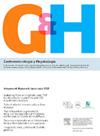Evaluación de la remisión en colitis ulcerosa: relación entre marcadores clínicos, endoscópicos e histológicos como predictores de recaída
IF 1.9
4区 医学
Q3 GASTROENTEROLOGY & HEPATOLOGY
引用次数: 0
Abstract
Introduction
In ulcerative colitis (UC), STRIDE-II consensus has established the long-term goal of achieving endoscopic remission (ER), which helps reduce inflammatory burden, prevent permanent intestinal damage, and improve patient's quality of life. However, achieving histological remission (HR) is also associated with a lower risk of experiencing outbreaks of inflammatory activity, the need for corticosteroids, hospitalizations, and the development of colorectal cancer.
Objective
Evaluate the role of ER and HR in the development of inflammatory activity flares in patients who have achieved these long-term goals and are being followed in the Inflammatory Bowel Disease (IBD) Program.
Material and methods
A retrospective study was conducted on patients with UC treated in the IBD Program at the Universidad de los Andes, between January 2021 and April 2023. Patients with ER (Mayo Endoscopic Index [MEI] 0) or endoscopic response (MEI 1), with at least one year of follow-up, were included. HR was defined using the Nancy (< 2), Geboes (< 2), and Robarts (< 3) indices. Inflammatory activity was assessed by a Partial Mayo Index (PMI) ≥ 2 and fecal calprotectin > 250 μg/g.
Results
A total of 84 patients were included, 57.1% were women, with a median age of 37 years (IQR 31-45). During follow-up, 71 patients continued in the study, and 24 (31%) experienced inflammatory flares. In the MEI 0 group, the percentage of flares at 12 and 44 months was 15% and 53%, respectively, compared to 43% and 67% in the MEI 1 group (p = 0.0302). PMI and fecal calprotectin levels were significantly lower in MEI 0 than in MEI 1 (p < 0.001 and p < 0.05, respectively). Although the Nancy, Geboes, and Robarts indices showed significant differences between MEI 0 and MEI 1, none were associated with a lower risk of flares in the MEI 0 group. No cases of colorectal neoplasia or need for surgery were reported during follow-up.
Conclusion
In this cohort, ER is a significant predictor of the development of inflammatory flares in patients with UC, while HR did not show a clear impact in this regard. Further studies are needed to clarify the role of HR as a therapeutic target in UC.
溃疡性结肠炎缓解评估:临床、内窥镜和组织学指标作为复发预测指标的关系。
简介:在溃疡性结肠炎(UC)中,STRIDE-II共识建立了实现内镜缓解(ER)的长期目标,这有助于减轻炎症负担,预防永久性肠道损伤,提高患者的生活质量。然而,实现组织学缓解(HR)也与经历炎症活动爆发、皮质类固醇需求、住院治疗和结直肠癌发展的较低风险相关。目的:评估ER和HR在炎症性肠病(IBD)项目中达到这些长期目标的患者炎症活动发作中的作用。材料和方法:在2021年1月至2023年4月期间,对洛斯安第斯大学IBD项目治疗的UC患者进行了回顾性研究。纳入随访至少1年的ER (Mayo内镜指数[MEI] 0)或内镜反应(MEI 1)患者。HR采用Nancy(250µg/g)测定。结果:共纳入84例患者,女性占57.1%,中位年龄37岁(IQR 31-45)。在随访期间,71例患者继续参与研究,24例(31%)出现炎症发作。在MEI 0组中,12个月和44个月的耀斑百分比分别为15%和53%,而MEI 1组为43%和67% (p = 0.0302)。MEI 0组PMI和粪钙保护蛋白水平显著低于MEI 1组(p < 0.001和p < 0.05)。虽然Nancy、Geboes和Robarts指数在MEI 0和MEI 1之间存在显著差异,但MEI 0组中没有任何与较低的耀斑风险相关。随访期间未发现结直肠肿瘤或需要手术的病例。结论:在本队列中,ER是UC患者炎症发作的重要预测因子,而HR在这方面没有明显的影响。需要进一步的研究来阐明HR作为UC治疗靶点的作用。
本文章由计算机程序翻译,如有差异,请以英文原文为准。
求助全文
约1分钟内获得全文
求助全文
来源期刊

Gastroenterologia y hepatologia
GASTROENTEROLOGY & HEPATOLOGY-
CiteScore
1.50
自引率
10.50%
发文量
147
审稿时长
48 days
期刊介绍:
Gastroenterology and Hepatology is the first journal to cover the latest advances in pathology of the gastrointestinal tract, liver, pancreas, and bile ducts, making it an indispensable tool for gastroenterologists, hepatologists, internists and general practitioners.
 求助内容:
求助内容: 应助结果提醒方式:
应助结果提醒方式:


